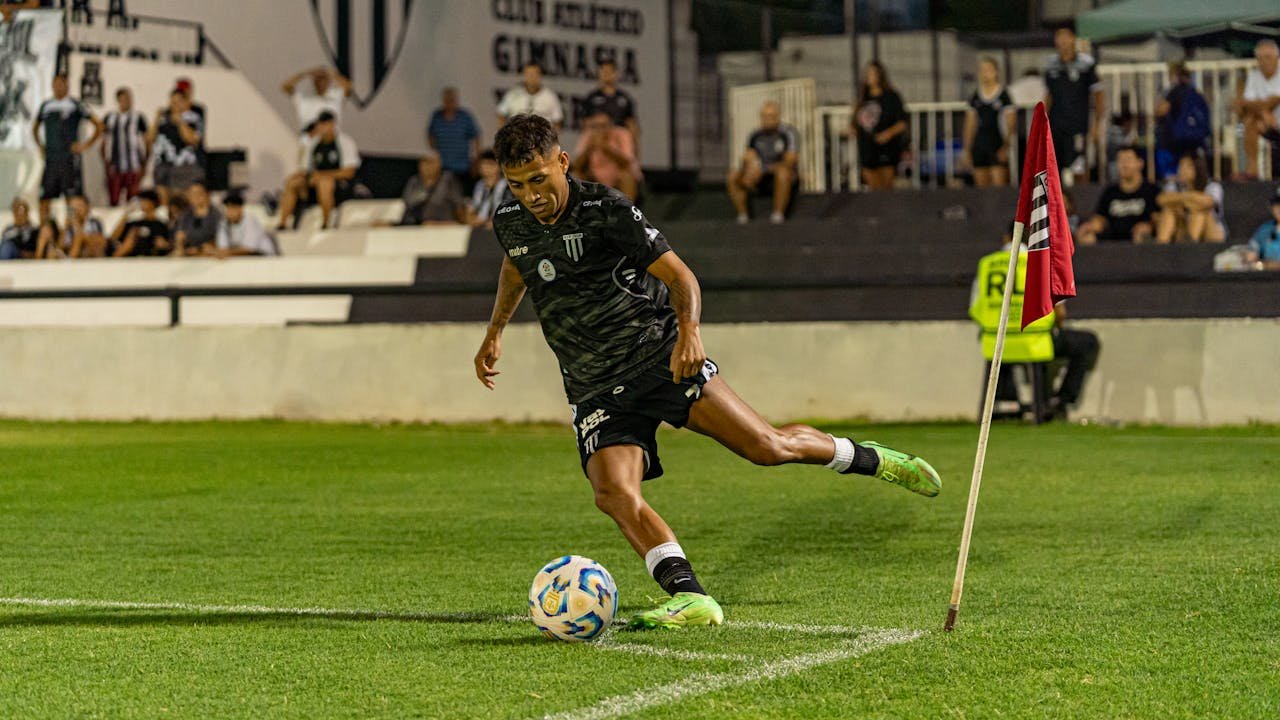Set pieces can be game-changers in soccer. Whether it’s a corner kick or a free kick, a well-executed set-piece strategy can be the difference between winning and losing. Some of the best teams in the world rely on set plays to break down tight defenses and capitalize on scoring chances.
If you’ve ever wondered how to score more goals from set pieces, this guide will break it all down. From positioning and movement to different free-kick techniques, we’ll cover everything you need to know to improve your team’s effectiveness.
Why Are Set Pieces So Important in Soccer?
Set pieces are one of the best opportunities to score because they allow teams to plan their attacks without defensive pressure. Unlike open play, where defenders can constantly press and disrupt passing lanes, set pieces provide a controlled situation where precision and strategy can take over.
Stats:
According to a study of top European leagues, around 30% of all goals come from set pieces. This includes corner kicks, free kicks, and penalties. A well-drilled team can significantly increase its goal tally by mastering set-piece strategies.
How to Score More Goals from Corner Kicks
Corner kicks are one of the best chances to score, especially for teams with strong aerial players. A well-delivered ball into the box can create chaos and open up scoring opportunities.
Where Should the Ball Be Delivered?
There are several key areas to target with a corner kick:
- Near post: A quick flick-on can redirect the ball toward goal or into the path of a teammate.
- Far post: Ideal for taller players who can overpower defenders and head the ball back across goal.
- Penalty spot: Great for a powerful header or a well-timed volley.
- Short corner: Allows for better angles and precision by passing to a teammate instead of crossing immediately.
Best Runs and Movements to Attack a Corner
Players need to make smart movements to create space and attack the ball effectively. Some of the best runs include:
- Front-post run: A quick burst to the near post to get a flick-on or deflect the ball toward goal.
- Back-post ghosting: A delayed run to the far post to capitalize on defensive lapses.
- Penalty spot run: Starting from outside the box and sprinting toward the penalty spot for a powerful header.
Best Corner Kick Takers
A good corner taker needs to have accuracy, power, and the ability to deliver different types of crosses. Some top players known for their corner-taking ability include:
- Kevin De Bruyne
- Trent Alexander-Arnold
- Lionel Messi
How to Score More Goals from Free Kicks
Free kicks are another great way to score, but they require excellent technique. Whether it’s a direct shot or a planned team move, free kicks can be deadly if executed properly.
Best Types of Free Kicks to Score More Goals
There are different ways to strike a free kick depending on the distance, angle, and the position of the defensive wall. Some of the most effective techniques include:
- Curled free kick: A bending shot that curves around the wall and into the top corner.
- Knuckleball free kick: A strike with little to no spin that moves unpredictably in the air.
- Driven free kick: A powerful shot with minimal curve, aimed low to beat the goalkeeper.
Where Should a Free Kick Be Taken From?
Central Free Kicks
If the free kick is in the middle of the pitch, the best option is usually a direct shot. A skilled taker can aim for either corner, making it hard for the goalkeeper to react.
Wide-Angle Free Kicks
If the free kick is from the wings, a curled cross toward the back post is often the best approach. This allows teammates to attack the ball and redirect it toward goal.
Who Are the Best Free-Kick Takers?
Some of the greatest free-kick takers in history include:
- David Beckham
- Juninho Pernambucano
- Lionel Messi
- Cristiano Ronaldo
How to Outsmart Defenders During Set Pieces
Scoring from set pieces isn’t just about great deliveries. It’s also about movement, deception, and creating space in a crowded penalty area.
How to Lose Your Marker on Corners and Free Kicks
Defenders will try to stick close and block runs, but smart movement can create separation. Here are some of the best ways to lose your marker:
- Blindside Runs: Approach from an angle where the defender has to turn to track you, making them react slower.
- Fake Movements: Pretend to run one way, then suddenly change direction to create space.
- Blocking Tactics: A teammate can legally stand in the way of a defender, making it harder for them to track their man.
- Late Arrivals: Start your run late so defenders don’t have time to react.
How to Use Misdirection to Confuse the Opposition
Some teams use set-piece routines that involve deception and unexpected movements. Here are some clever tactics to try:
- Dummy Runners: One or two players make fake runs to draw defenders away from the real target.
- Quick Free Kicks: Instead of waiting for the defense to set up, take the free kick immediately while they’re unprepared.
- Short Corners: Passing short instead of crossing directly can create a better angle for a cross or shot.
How to Improve Free-Kick and Corner Accuracy
Delivery is everything when it comes to set pieces. If the ball isn’t placed well, even the best movement won’t lead to goals.
Best Drills to Improve Free-Kick Accuracy
If you want to score more free kicks, consistent practice is key. Here are some of the best training drills:
- Target Practice: Set up cones or markers in the goal’s corners and aim to hit them consistently.
- Wall Drills: Practice curling shots over a training wall to simulate real-game scenarios.
- Power Strikes: Work on low-driven shots by striking through the ball with your laces.
Helpful Hint:
When practicing free kicks, always vary your approach. Try different angles, power levels, and run-up speeds to develop a well-rounded technique. Repetition is key, but make sure to mix things up to simulate real-game situations.
How to Perfect Corner Kick Delivery
Crossing from a corner requires accuracy and technique. To improve your delivery, follow these steps:
- Adjust Your Body Position: Lean slightly back to get more height on the ball, or stay over it for a lower cross.
- Focus on the Contact Point: Hitting the bottom half of the ball generates lift, while striking the sides creates curve.
- Experiment with Different Trajectories: Try outswingers, inswingers, and driven crosses to see what works best.
How Defenders Can Stop Set-Piece Goals
Great attacking set pieces need equally good defensive tactics to counter them. If your team struggles to defend corners and free kicks, these strategies can help.
Man-Marking vs. Zonal Marking: Which Is Better?
Teams typically use one of these two defensive systems:
- Man-Marking: Each defender is assigned to a specific opponent, following them closely throughout the set piece.
- Zonal Marking: Defenders cover specific areas rather than individual players, reacting to the ball’s flight.
A combination of both approaches often works best. Defenders can mark key threats while others protect dangerous zones.
How Goalkeepers Can Command the Box
Goalkeepers play a crucial role in defending set pieces. They need to:
- Communicate loudly with defenders to organize marking assignments.
- Position themselves correctly to anticipate crosses.
- Be aggressive when coming out to claim the ball.
Frequently Asked Questions
Wrapping Up
Set pieces can make the difference between winning and losing. Whether you’re looking to score more from corners and free kicks or improve defensively, understanding positioning, movement, and delivery is essential.
Teams that consistently practice set-piece tactics have a major advantage. The best free-kick takers focus on accuracy and variation, while corner takers need to adjust their delivery based on their team’s strengths. Smart movement inside the box can create space, while defenders must stay disciplined and communicate effectively.
By applying these strategies, you can turn set-piece situations into scoring opportunities. Small improvements in technique, awareness, and execution can have a huge impact. Keep refining your skills, analyze what works best for your team, and make every set piece count.





